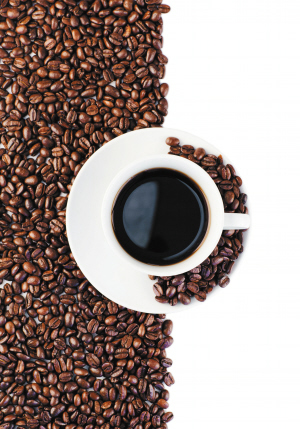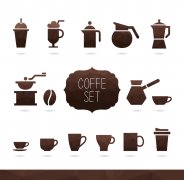The importance of correct coffee grinding Basic principles of grinding Coffee powder fineness Blending beans
The term "fine coffee" was first put forward by Ms. Knudsen of the United States in Coffee and Tea magazine. At that time, Ms. Knudsen, as a coffee buyer of B.C. Ireland in San Francisco, was very dissatisfied with the neglect of the quality of raw coffee in the industry, and even some big roasters mixed a large amount of Robesda beans in the comprehensive beans, so she put forward the concept of fine coffee to advocate the improvement of the quality of the industry. This term is used to describe coffee beans with distinctive flavor characteristics that grow in a special environment. Its use in international coffee conferences makes it spread rapidly.
The key points of grinding are as follows:
1. Grinding particles should be uniform
two。 Cannot produce heat.
3. Can not produce fine powder (young powder)
4. Select the degree of grinding suitable for extraction
First, the grinding particles should be uniform. Uneven coffee will lead to inconsistent and uncoordinated taste, no matter which step, the uneven situation must be reduced to a minimum, regardless of grinding or baking, the pursuit of non-miscellaneous, homogeneous and balanced coffee. The uniformity of the ground coffee particles will directly affect the balance of the coffee liquid. In other words, uneven coffee powder will make the concentration of coffee liquid uneven. How does the difference in grinding degree affect the taste of coffee?
The finer the grinding degree is, the stronger the bitter taste is, and the thicker the grinding degree is, the weaker the bitter taste is.
This is a basic principle.
The reason is very simple, fine grind coffee powder surface area is larger, extract more ingredients, the more ingredients soluble in water, the more liquid, the stronger the bitterness. On the contrary, the rough ground coffee powder has a small surface area and less extracted powder. of course, the concentration will be lower and the bitterness will be weaker. If the bitter taste is weak, the sour taste will become stronger instead.
Compared with Article 1 of this basic Law, if coffee powder with different grinding degrees is mixed together, the concentration of soluble powder will be different, and both sour and bitter taste will be extracted. It is conceivable that this cup of coffee will turn into a muddy and smelly liquid.
The second is the problem of friction heat generated by the bean grinder. It is normal to produce heat during grinding. The reason to pay attention to this is because heat obviously harms taste and aroma. This is the price difference between the bean grinder with metal blade and the bean mill with ceramic blade. After many international studies, experts believe that under very common speed and load conditions, the instantaneous high temperature caused by friction in the local area of the metal surface can be as high as 500-1000 ℃.
Therefore, it is inevitable that ground coffee will produce heat, but the heat will vary according to the mechanism of grinding beans. Bean grinders grind coffee beans in two ways: one is to grind coffee beans with two grinding plates engraved with shallow grooves, which we call parallel grinders, and most manual bean grinders fall into this category. The other is represented by the shredder, and the coffee beans are cut by two sets of rollers with sharp blades that bite perpendicular to each other, which is the so-called tapered blade grinder.
It is generally believed that slow grinding with a manual parallel bean grinder will not produce heat, in fact, on the contrary, the type of friction with a disc blade is easy to produce heat. On the other hand, the tapered bean grinder can minimize the friction heat produced by grinding coffee powder. The reason is that the tapered blade is ground quickly with a longer blade process, and the tapered blade takes less time and has a lower heating rate at the same thickness.
Third, the skill of not producing fine powder.
Fine powder will make the coffee liquid turbid, but also bring uncomfortable bitterness and astringency. The most common disadvantage of fine powder is that the fine powder with high temperature and electricity is directly attached to the inside of the bean grinder and mixed into the new coffee during the next grinding.
The trick of not producing fine powder is to choose a bean grinder that will not produce fine powder as much as possible, or to clean it in time after each use. The hand-operated ceramic blade bean grinder can be washed directly, and if it is an electric mill, the fine powder attached to it can be carefully removed with a brush. In short, cleaning the bean grinder is the first action that must be done.
Fourth, it is suitable for the degree of grinding of the corresponding extraction method.
The finer the grinding degree is, the stronger the bitter taste is, and the thicker the grinding degree is, the weaker the bitter taste is. This is the basic law of immutability. This is caused by the different amount of hot water covering the surface area of coffee powder, so we can know the relationship between the extraction apparatus and the grinding degree of coffee powder.
Espresso, for example, finely grinds deep-roasted beans and uses a semi-automatic coffee machine to extract a small amount of coffee in a short period of time to get coffee with a strong bitter taste. What if the same coffee powder is extracted by hand? The filter paper will be blocked by coffee powder, making it difficult for the injected hot water to pass through, and the extraction time will be lengthened, eventually leading to excessive extraction.
And blindly rough grinding will be better? This is also a matter of degree. If the grinding is too rough, the hot water will easily fall through the filter paper, and the fragrance of the coffee will not be fully extracted. In this way, the extracted coffee liquid becomes a liquid with little flavor.

Important Notice :
前街咖啡 FrontStreet Coffee has moved to new addredd:
FrontStreet Coffee Address: 315,Donghua East Road,GuangZhou
Tel:020 38364473
- Prev

Three factors affecting Coffee Flavor Grinding degree of Coffee Powder extraction time Coffee Powder
The term "fine coffee" was first put forward by Ms. Knudsen of the United States in Coffee and Tea magazine. At that time, Ms. Knudsen, as a coffee buyer at B.C. Ireland in San Francisco, was very dissatisfied with the neglect of the quality of raw coffee in the industry, and even some big roasters mixed a large amount of Robesda beans in the comprehensive beans, so she put forward the concept of boutique coffee.
- Next

Powder filler and Italian espresso extraction filler Italian coffee machine Italian coffee beans
Filler base diameter: the filler base diameter is very important, but the mainstream problem in the market is not the filler diameter, but its effective filling area. Most filler manufacturers, when making fillers, almost always wrap the edge of the base in an arc. However, this small design reduces the effective filling area. The following figure illustrates this phenomenon (VS
Related
- Beginners will see the "Coffee pull flower" guide!
- What is the difference between ice blog purified milk and ordinary milk coffee?
- Why is the Philippines the largest producer of crops in Liberia?
- For coffee extraction, should the fine powder be retained?
- How does extracted espresso fill pressed powder? How much strength does it take to press the powder?
- How to make jasmine cold extract coffee? Is the jasmine + latte good?
- Will this little toy really make the coffee taste better? How does Lily Drip affect coffee extraction?
- Will the action of slapping the filter cup also affect coffee extraction?
- What's the difference between powder-to-water ratio and powder-to-liquid ratio?
- What is the Ethiopian local species? What does it have to do with Heirloom native species?

